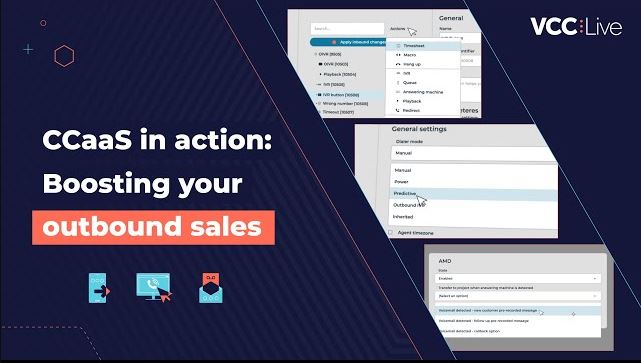Netlife Robotics
VCC Live IVR can seamlessly integrate with the Netlife voicebot solution.
Table of Contents
- How to integrate your Netlife voicebot with VCC Live IVR?
- Netlife Voicebot process parameters
- Handling Parameters
- Use Netlife Parameters on the Agent Script
How to integrate your Netlife voicebot with VCC Live IVR?
Navigate to project > Channels > Voice > Inbound
In the Processes tab, you can find the Actions drop-down menu. Here you can select Media service and insert it into your IVR structure
Netlife Voicebot process parameters
To successfully initialize a Netlife voicebot in your IVR, you need to pass on various parameters in Initialization parameters
endpoint: The endpoint that VCC Live shall access, e.g.: “voicebot.netliferobotics.com:4051”
formId: The unique ID of your form, e.g.: “12”
See example below:
{
"endpoint": "voicebot.netliferobotics.com:4051",
"formId": "12"
}
Handling Parameters
You can pass on parameters to Netlife in the section Input parameters / Parameters. They need to be in the following format:
{
"customerName": "${source}",
"phones": ["${source}", "${destination}"],
"number": 312312,
"boolean": true
}
Note: When you send parameters from VCC Live to Netlife, don’t forget to use a Query data process before gathering that data in the IVR.
In the IVR process, you can capture the following with unique IVR parameters:
- Action variable name: the name of the last event/intent that was performed before ending the Netlife process
- Context parameters variable name: all context parameters defined by users on the Netlife interface
- Response variable name: the entire response
- Error variable name: the error response, if any
Use Netlife Parameters on the Agent Script
In an agent script, you can use the Script JS SDK to reference variables that you used to store Netlife parameters.
You can create a function in the following way to get the variable: vcc.getScriptVariable(‘global.ivr.variable’), where ‘variable’ is what you have defined in your IVR process.
Related articles
There's always more to learn. Discover similar features by visiting related articles:












Comments
Can’t find what you need? Use the comment section below to connect with others, get answers from our experts, or share your ideas with us.
There are no comments yet.